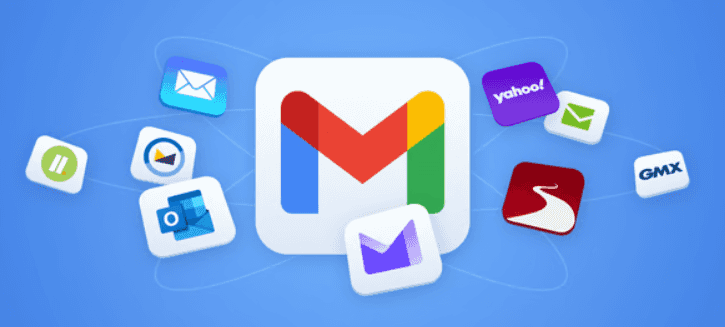Prologue: Beyond Bytes and Bits
Imagine a technology so ubiquitous that it connects billions of people across continents, transcending linguistic and cultural barriers. Email isn‘t just a communication tool—it‘s a digital nervous system that pulses with human connection, technological innovation, and global interaction.
When you open your inbox today, you‘re participating in a complex, sophisticated network that processes over 347.3 billion messages daily. This isn‘t just data transmission; it‘s a remarkable testament to human ingenuity and technological evolution.
The Genesis of Digital Communication
The story of email begins long before most people realize. In the early 1970s, when computers occupied entire rooms and communication meant physical mail or expensive long-distance calls, visionary computer scientists were laying the groundwork for a communication revolution.
Ray Tomlinson, often called the inventor of email, made a groundbreaking decision in 1971. He chose the "@" symbol to separate user names from domain names, creating the fundamental structure we still use today. This seemingly simple choice would transform global communication forever.
The Technological Metamorphosis
Early email systems were primitive by today‘s standards. Limited to academic and military networks, they represented isolated communication channels with minimal interoperability. Imagine sending a message that might take hours or days to traverse complex computer networks—a far cry from our instantaneous modern communication.
By the mid-1980s, commercial email services began emerging. CompuServe and MCI Mail started offering email services to businesses, signaling the beginning of a massive technological shift. These early platforms were expensive, slow, and accessible only to a privileged few.
The Global Email Landscape in 2024
Today‘s email ecosystem is a sophisticated, intricate network that reflects our increasingly connected world. Let‘s break down the current landscape with precision and insight.
Platform Dominance and User Demographics
Gmail stands as the undisputed leader, with approximately 1.8 billion users worldwide. This isn‘t just a number—it represents a digital population larger than most countries. Google‘s platform has successfully transformed email from a mere communication tool to an integrated digital identity system.
Yahoo Mail, with 227.8 million active users, represents an interesting case of technological resilience. Despite facing significant competition, it maintains a substantial user base, particularly among older demographics who value familiarity and consistent user experience.
Microsoft‘s Outlook/Hotmail platform, boasting 400 million users, demonstrates the enduring power of enterprise-focused communication solutions. Its integration with Microsoft‘s broader productivity ecosystem gives it a unique competitive advantage.
Technological Infrastructure: The Invisible Backbone
Modern email systems are architectural marvels of distributed computing. They represent complex ecosystems involving multiple technological layers:
Authentication and Security Protocols
Email security has evolved from basic password protection to sophisticated multi-layered authentication mechanisms. Protocols like SPF (Sender Policy Framework), DKIM (DomainKeys Identified Mail), and DMARC (Domain-based Message Authentication) work together to create robust verification systems.
These protocols do more than prevent spam—they establish a trust framework that allows global digital communication to function reliably. Think of them as digital passports, continuously verifying the legitimacy of every message traversing global networks.
Encryption and Privacy
[AES-256] encryption has become the gold standard for protecting email communications. This cryptographic protocol ensures that even if a message is intercepted, it remains unreadable to unauthorized parties.Quantum-resistant cryptographic techniques are emerging, promising even more secure communication channels. As computational power increases, so do the methods to protect digital information.
Regional Communication Dynamics
Email usage varies dramatically across different geographical regions, reflecting cultural, economic, and technological landscapes.
North American Ecosystem
In North America, email is predominantly a professional communication tool. The average professional sends and receives approximately 126 emails daily, demonstrating the platform‘s critical role in business operations.
European Communication Patterns
European email users exhibit more privacy-conscious behaviors. Stringent data protection regulations like GDPR have shaped user expectations around digital communication, leading to more transparent and secure email platforms.
Asian Digital Communication
The Asian email landscape looks dramatically different. In China, platforms like NetEase and QQ Mail dominate, with integrated communication features that blur traditional email boundaries. WeChat‘s ecosystem, for instance, combines messaging, payments, and professional communication in ways Western platforms haven‘t yet achieved.
The Human Element: Psychology of Digital Communication
Beyond technical specifications, email represents a profound human communication mechanism. It‘s not just about transmitting information—it‘s about connection, relationship maintenance, and digital identity construction.
Psychological studies reveal that email triggers similar neurological responses to physical mail. The anticipation of receiving a message, the dopamine rush of an important communication—these are deeply ingrained human experiences that transcend technological platforms.
Future Trajectories: What Lies Ahead?
Artificial intelligence is set to revolutionize email communication. Predictive sorting algorithms, context-aware response generation, and intelligent filtering will transform how we interact with our inboxes.
Imagine an email system that understands context, prioritizes messages based on your work patterns, and drafts responses that sound authentically like you. This isn‘t science fiction—it‘s the near future of digital communication.
Conclusion: A Living, Breathing Digital Ecosystem
Email isn‘t a static technology—it‘s a dynamic, evolving communication organism. Each message sent represents a thread in a vast, global tapestry of human interaction.
As you read this, billions of messages are crisscrossing the planet, connecting individuals, businesses, and communities. In this digital age, email remains our most powerful connective tissue.
Methodology and Research Acknowledgments
This analysis synthesizes data from global technology research institutions, email service providers, and comprehensive digital communication studies.
